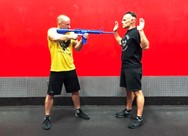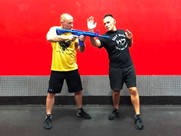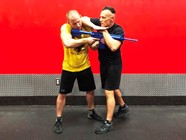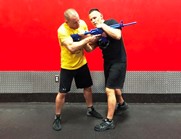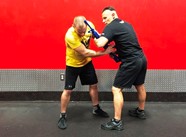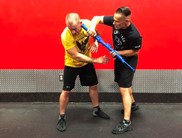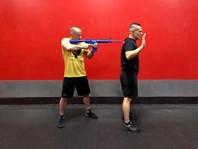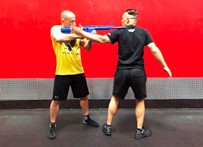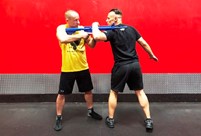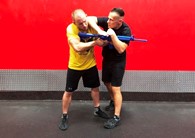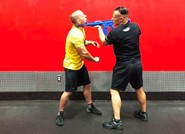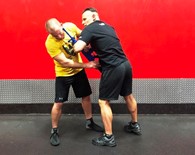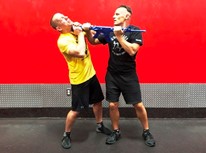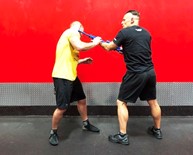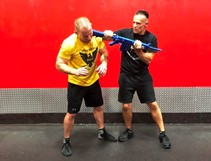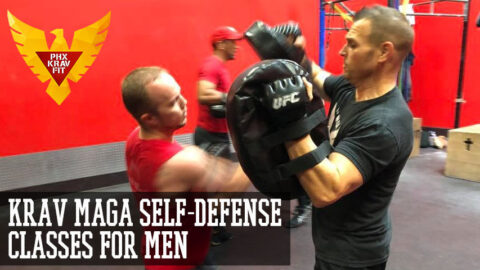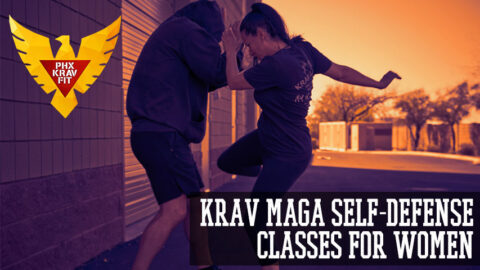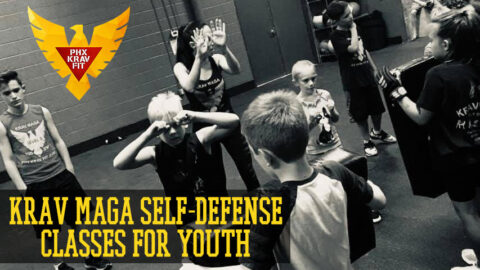Disarm an AR 15 Armed Attacker or Ahooter
As “mass shootings” with “AR” type weapons have gotten massive media attention over the last several years, self-defense practitioners have looked for resources on how to combat these types of attacks.
The “Run, Hide, Fight” method has been taught around school campuses and in corporate environments, but little has been taught on how to specifically disarm someone with a “long gun” type weapon.
When describing a disarm in this sense, the first step is making sure we have the necessary distance to disarm the assailant. Therefore, we’re not talking about running at a shooter with an AR 15 from 30 yards away. What we’re about to cover is how to perform a disarm when we have a shooter a couple feet away from us, ready to shoot us, or even a third party.
A realistic disarm should take three very direct steps when done correctly
The basic frontal disarm’s first step is a clearing motion where the weapon’s barrel is batted away, clearing the line of fire from a person’s face or upper torso.
The second step is to wrap or isolate the weapon with your left arm, assuming you are clearing using your right arm. At the same time as isolating, you want to deliver a swift elbow strike to the face. Although a regular punch can be used, you’ll find that an elbow can strike faster, while also delivering more bang for your buck.
Following the elbow strike, you then reach under the arm and grab the stock, using it as leverage to strike the person in the face with their own barrel. This move is then followed by a “kyak” motion, of several strikes using both ends of the firearm, while moving back to disarm the weapon, as you wrench it out of their hands.
The reasons why this disarm works so well, is that it takes place in close quarters. The holder of the long gun is actually at a disadvantage in this range given its length, as its strength is distance. Once you are in close quarters against the opponent, it is difficult for them to put the line of fire back on you.
That is why using our close quarters moves, such as elbows, knees and even head butts works so well as follows ups after the initial striking with the weapon. In most cases, the assailant will not want to let go of their weapon, leaving them open for brutal strikes with these tools. Once we have inflicted pain, we simply follow up with combining a disarm with several more strikes using the weapon itself, such as using the barrel and stock to strike the opponent.
The phrase I use is “kayak with anger”, as we rotate the gun in a “kayaking” motion, striking the opponent with both ends of the firearm. As we do this, the goal is to again gain distance so we can either disengage to run, turn the sights back on the attacker or even clear a malfunction from wrestling with the gun. In order to disarm the weapon while being held up from behind, one must clear the weapon using the turn of the body, and then flowing into the wrap and “kayaking” movement of several strikes. It can’t be stressed enough that after either disarm, gaining distance after the disarm is very important.
These strategies work just as well with rifles and shotguns as it does with “assault type” weapons. See in the pictures included how rear disarm an ar 15 armed attacker can also be performed using the same technique of clear, isolate and kayak.

